Health Care > EXAM > LPN to RN Mobility Exam 2023 COMPLETE SOLUTION ( A+ GRADED 100% VERIFIED) (All)
LPN to RN Mobility Exam 2023 COMPLETE SOLUTION ( A+ GRADED 100% VERIFIED)
Document Content and Description Below
Question 1 of 27 Which information is most important for the nurse to obtain in the initial assessment? "Is there anything you would like to ask your healthcare provider?" This response does not di... rectly address Mr. Mathis' anxiety. "Tell me about concerns you have about being hospitalized." This response utilizes principles of therapeutic communication. It is an open-ended question designed to allow Mr. Mathis to verbalize any concerns about hospitalization that might be contributing to his anxiety. "We give good care to all of our clients in this hospital." This response does not provide an opportunity for Mr. Mathis to verbalize and is a block to further communication. "Your healthcare provider has chosen the best hospital in the city." This response is a closed, non-therapeutic statement that is authoritative and does not address Mr. Mathis' anxiety. Question 2 of 27 What action should the nurse implement to help reduce Mr. Mathis' anxiety during the admission process? Explain the room environment to Mr. and Mrs. Mathis. This action will reduce the client's anxiety by including the spouse and orienting them both to the room. Ask Mrs. Mathis if she would like to rest in the waiting room. This action removes the supportive spouse, which is likely to increase Mr. Mathis'sanxiety. Ask Mr. Mathis if he would like a prescription for an antianxiety medication. Although this may be needed later, it is not the best initial action to reduce anxiety. Reassure Mr. and Mrs. Mathis that everything will be okay. This is false assurance, and it should be avoided. Question 3 of 27 When care is planned for Mr. Mathis, which nursing diagnosis should take priority? Risk for caregiver role strain. Although this risk exists for the client's wife (and could affect the client's care), it is not the priority diagnosis. Risk for social isolation. Social isolation can occur, but it is not the priority diagnosis. Impaired physical mobility. Mr. Mathis's limited activities support this nursing diagnosis. Improving mobility is a nursing priority to prevent the many potential complications of immobility. Imbalanced nutrition: more than body requirements. There is no evidence presented to support this diagnosis. Question 4 of 27 Which goal is correct for Mr. Mathis' diagnosis of impaired physical mobility? The client will transfer to the chair with assist of one person. This goal is incomplete. The nurse will reposition the client every hour while the client is awake. This statement is a nursing action, not a measurable goal. The client will sit in the chair for each meal beginning on the day of admission. This is a correctly stated goal. The client is always the subject of the goal, and the action is always measurable. This goal includes what Mr. Mathis is to achieve and sets a realistic deadline. The nurse will assist the client to ambulate in the hall by the second hospital day. This statement is a nursing action, not a client goal. Question 5 of 27 Which instructions should the nurse convey to help prevent venous thromboembolism (VTE) in Mr. Mathis' legs? Select all that apply Encourage Mr. Mathis to use the incentive spirometer 10 times an hour while awake. This action helps prevent pneumonia, not VTE. Teach Mr. Mathis to dorsal flex and plantar flex his feet while in the bed and chair. This action stimulates circulation by contracting calf muscles, which increases the venous return of blood to the heart. This decreases pooling of blood in the legs, which helps VTE in the legs. Instruct Mr. Mathis to wear sequential compression stockings. Sequential compression devices (SCD) promote venous blood flow, preventing VTE. Advise Mr. Matthew to try not to move and cause pain in his foot wound. This action will not prevent venous thromboembolism, it will cause it. Explain that enoxaparin injections will be administered routinely. Enoxaparin is an anticoagulant that is administered to reduce the risk of VTE. Question 6 of 27 The nurse is observing a student nurse perform a peripheral assessment on Mr. Mathis. Which action requires the nurse to intervene? Palpating bilateral pedal pulses. This is an appropriate assessment. Assessing the capillary refill in the great toe. This assessment determines blood flow, and appropriate action. Assessing the Homan’s sign in bilateral extremities. Homan’s sign is a potentially dangerous method because of possible clot dislodgment. Applying light pressure in ankles to determine edema. This is an appropriate assessment for pedal edema. Question 7 of 27 The HCP has prescribed thigh-high antiembolic hose for Mr. Mathis. The nurse assesses the client's legs every 8 hours. Which assessment finding reflects signs of possible thrombophlebitis that should be reported to the HCP? Negative for paresthesia. Parasthesia is an abnormal sensation, such as tingling or numbness. It is not a warning sign of thrombus formation. Decreases hair growth in lower legs. This finding is not related to thrombus formation. Negative for pallor. Lack of paleness is a normal finding. Unilateral calf edema. Edema, or swelling of one calf, is a possible sign of thrombophlebitis that should be reported to the HCP. Question 8 of 27 Which instruction should the nurse give to the unlicensed assistive personnel (UAP) for positioning Mr. Mathis' legs? Use two pillows and place one lengthwise under each calf. This method provides a slight elevation of the lower legs for comfort but avoids pressure behind the knees, which would adversely decrease venous return and decrease the risk for venous thrombosis. Let him position himself with pillows until he is comfortable. Although comfort is important, the client needs education on the best position to decrease the risk for thrombus formation. Allow him to use the bed controls to markedly flex his knees. Marked flexion of the knees decreases circulation in the legs and increases the risk for thrombus formation. Encourage him to keep his legs flat and not bend his knees. Not only is this position of marked extension of the knees uncomfortable, it does not provide normal body alignment. Question 9 of 27 Which nursing diagnosis best applies to Mr. Mathis' nutritional assessment? Imbalanced nutrition: less than body requirements. The choice of this diagnosis is supported by the evidence of his BMI, which is below 18.5, placing him in the underweight category, and his lack of intake of nutrients. Imbalanced nutrition: more than body requirements. Even though he drinks a lot of diet colas, they do not supply nutrition. Risk for aspiration. There is no evidence to support this diagnosis. Knowledge deficit: nutrition. The RN has not investigated Mr. Mathis' knowledge regarding nutrition. Question 10 of 27 The nurse instructs Mr. Mathis to increase his intake of which foods to prevent a decrease in bone density? Any food that is high in calories. Although calories are needed for energy, specific foods for preventing osteoporosis need to be identified for the client. Foods that are rich in vitamin C. Vitamin C is not a nutrient that promotes an increase in bone density. It is an antioxidant. Calcium rich foods. Calcium must be deposited in the bone to increase bone density. High fiber foods. Fiber is beneficial for preventing constipation, not osteoporosis [Show More]
Last updated: 1 year ago
Preview 1 out of 10 pages

Buy this document to get the full access instantly
Instant Download Access after purchase
Add to cartInstant download
We Accept:

Reviews( 0 )
$15.00
Document information
Connected school, study & course
About the document
Uploaded On
Feb 04, 2023
Number of pages
10
Written in
Additional information
This document has been written for:
Uploaded
Feb 04, 2023
Downloads
0
Views
29

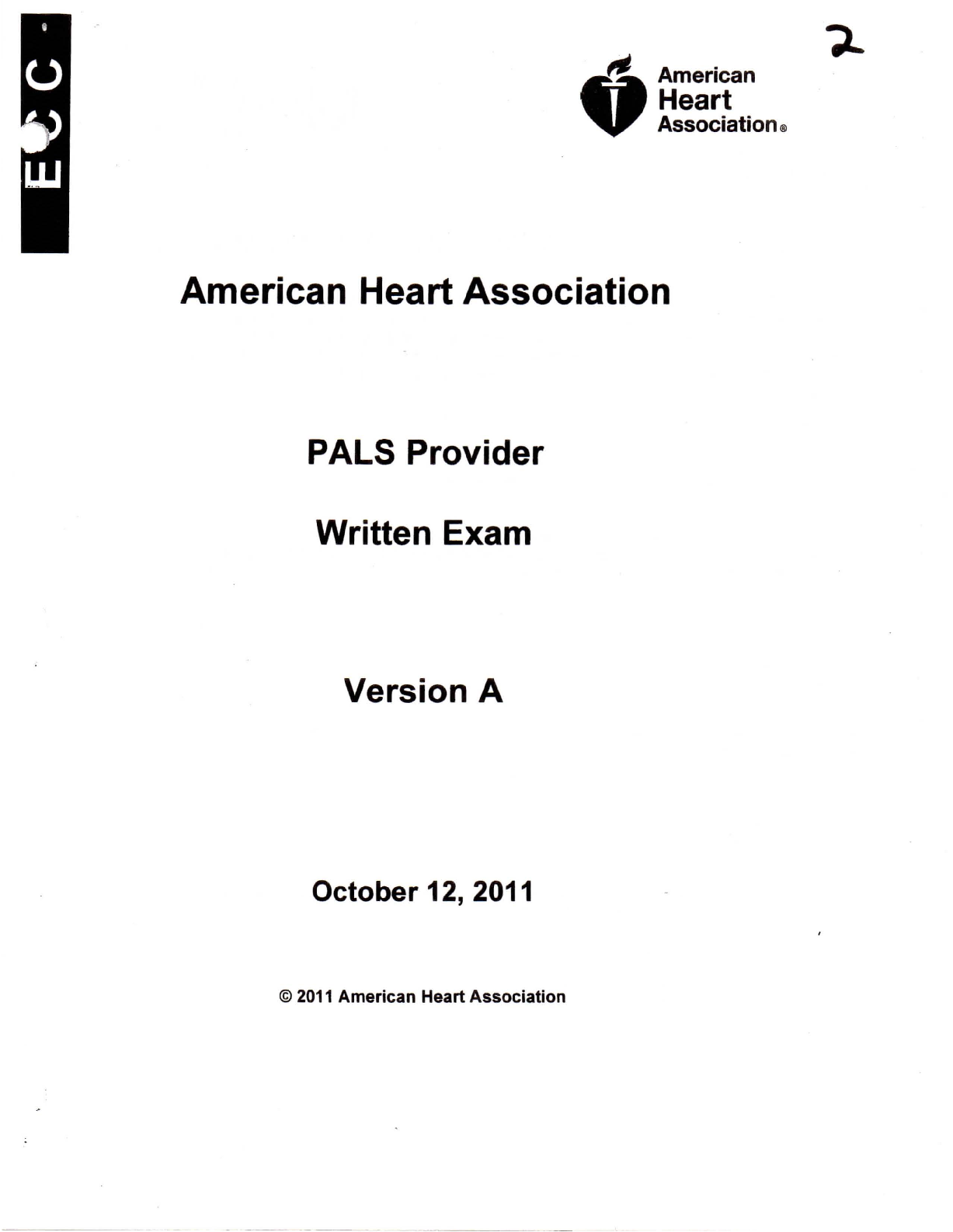
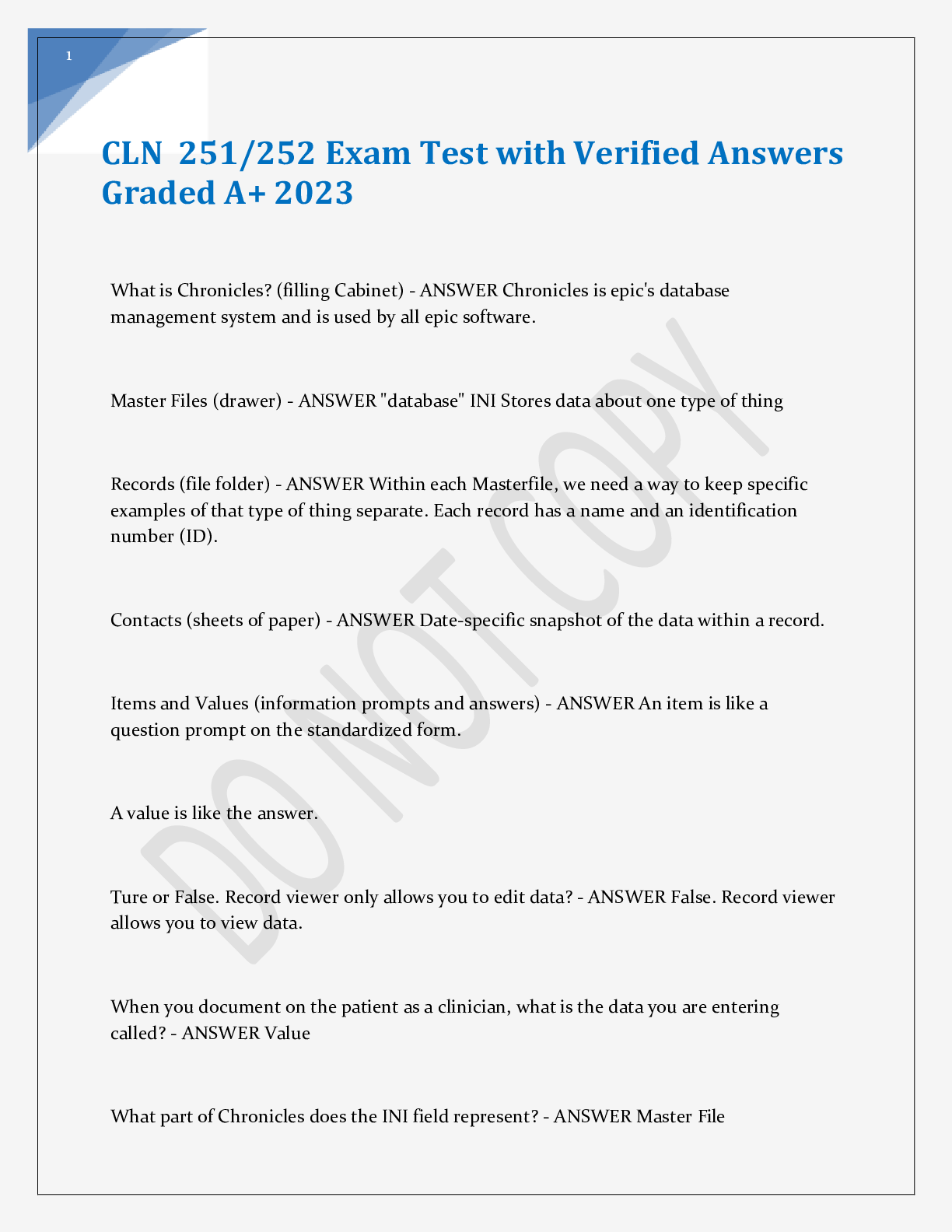
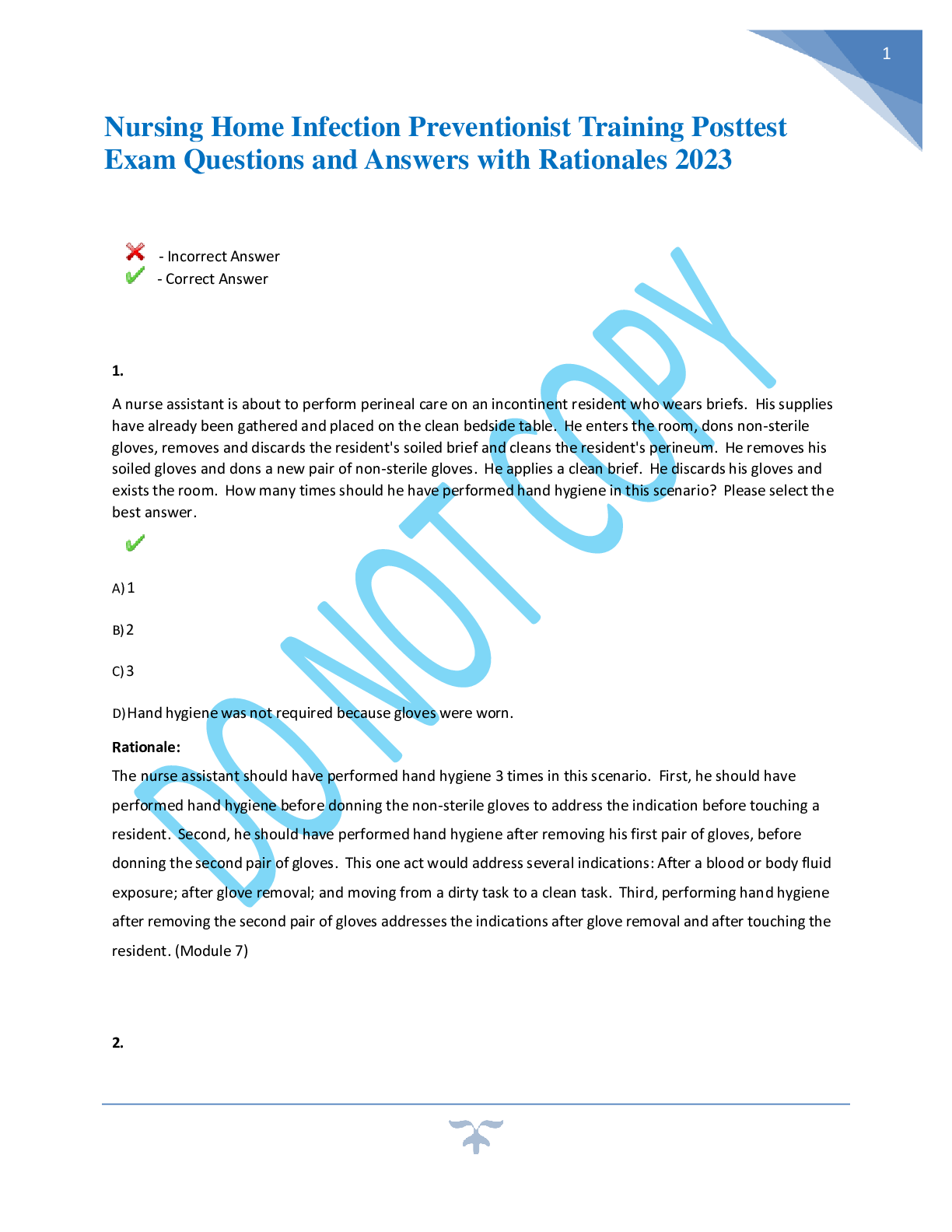
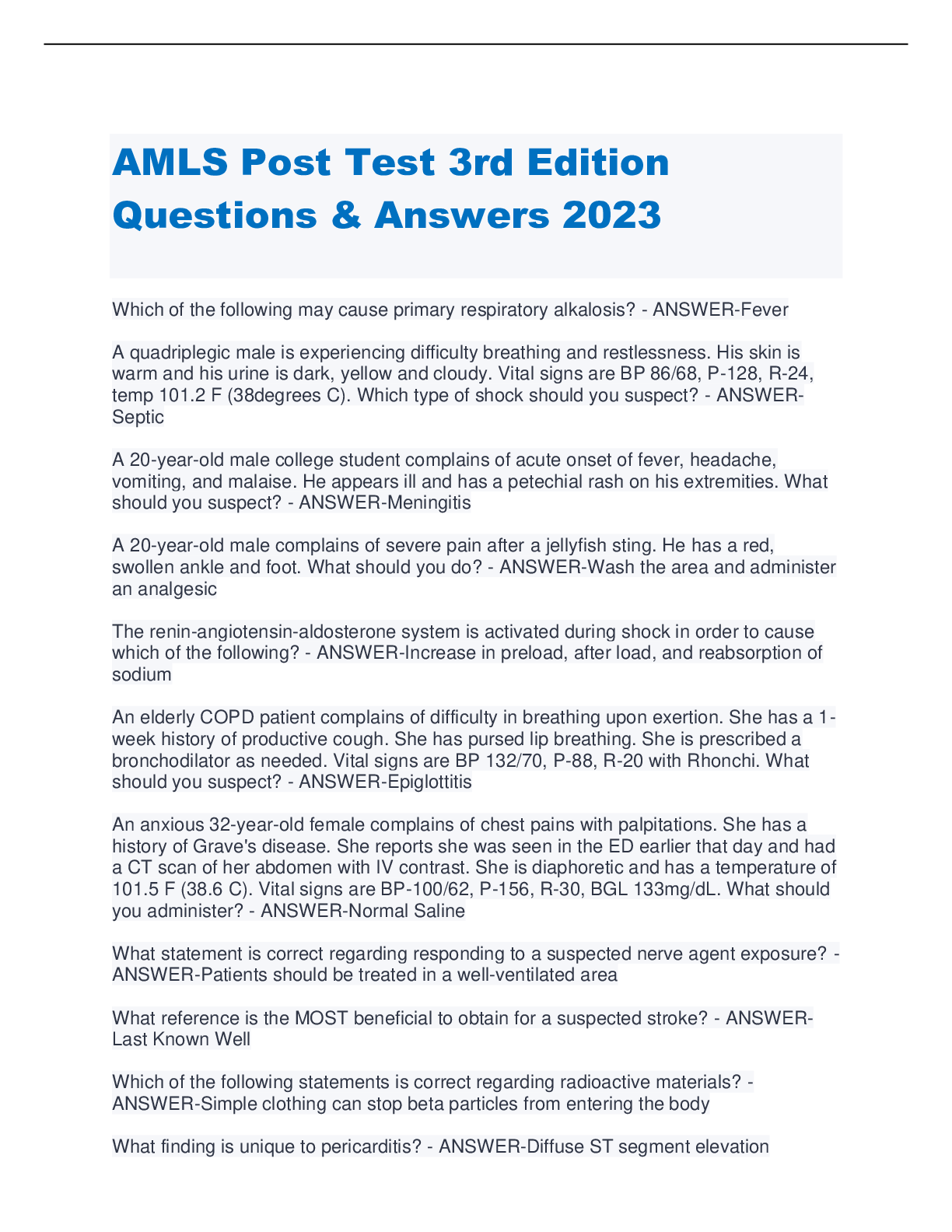
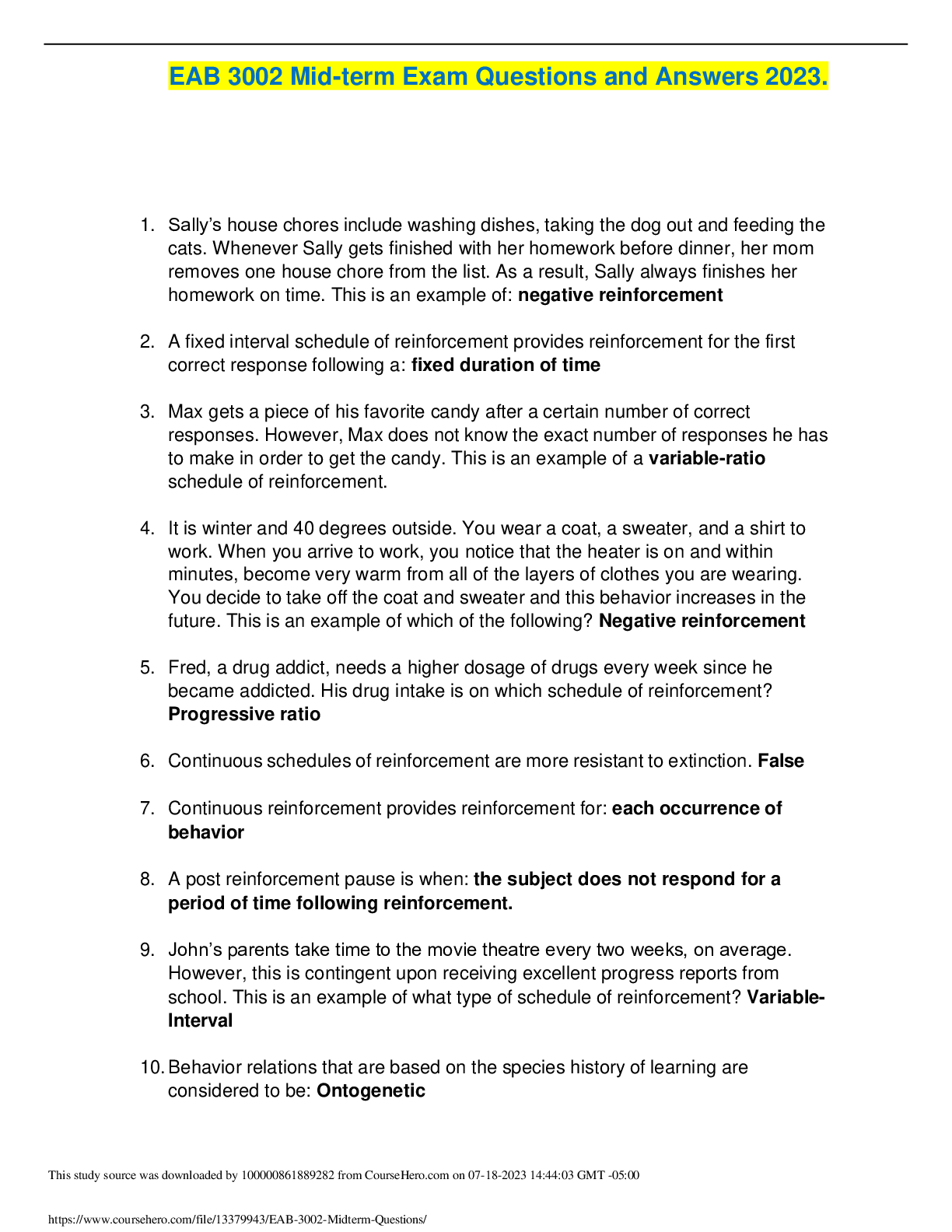

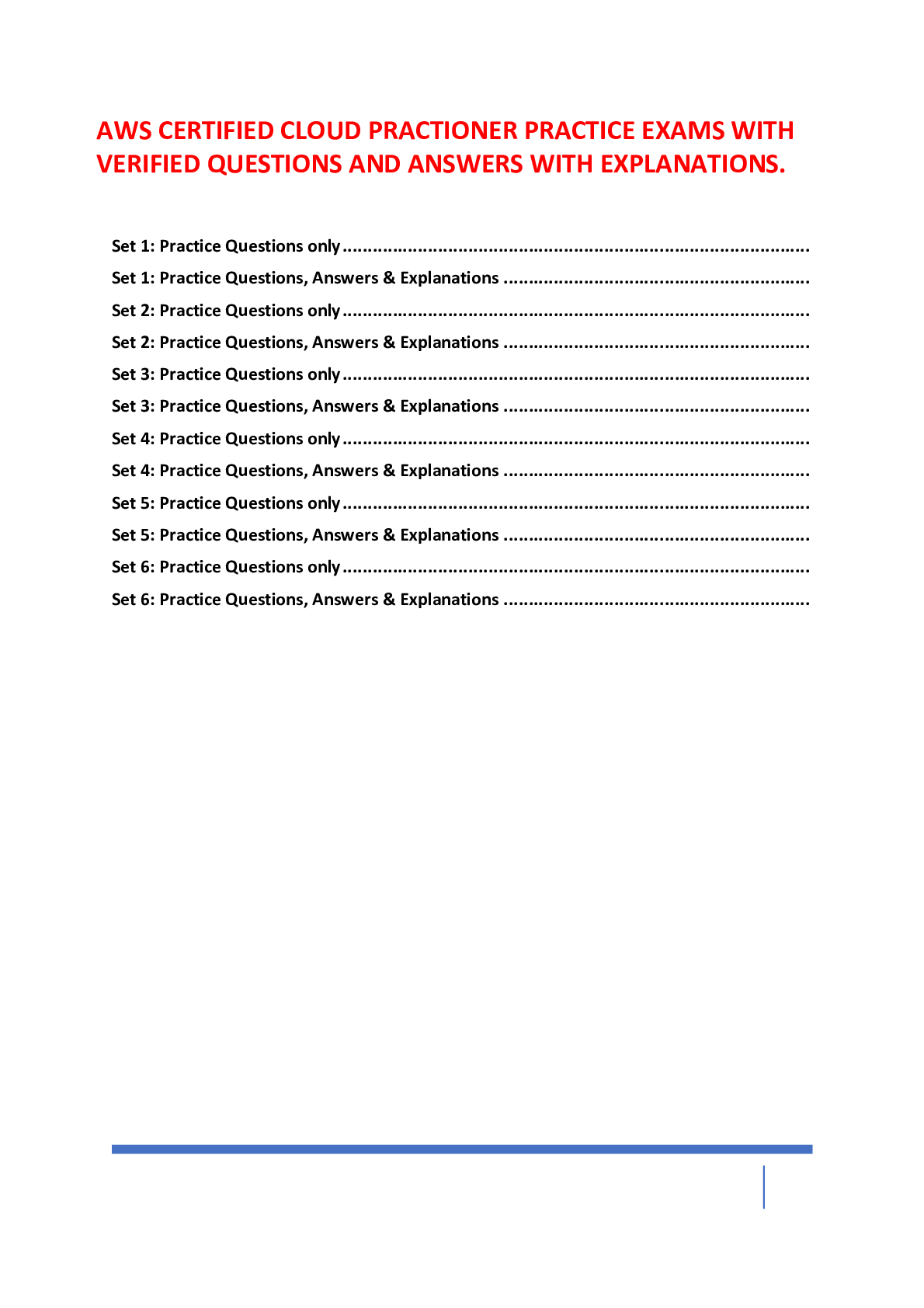
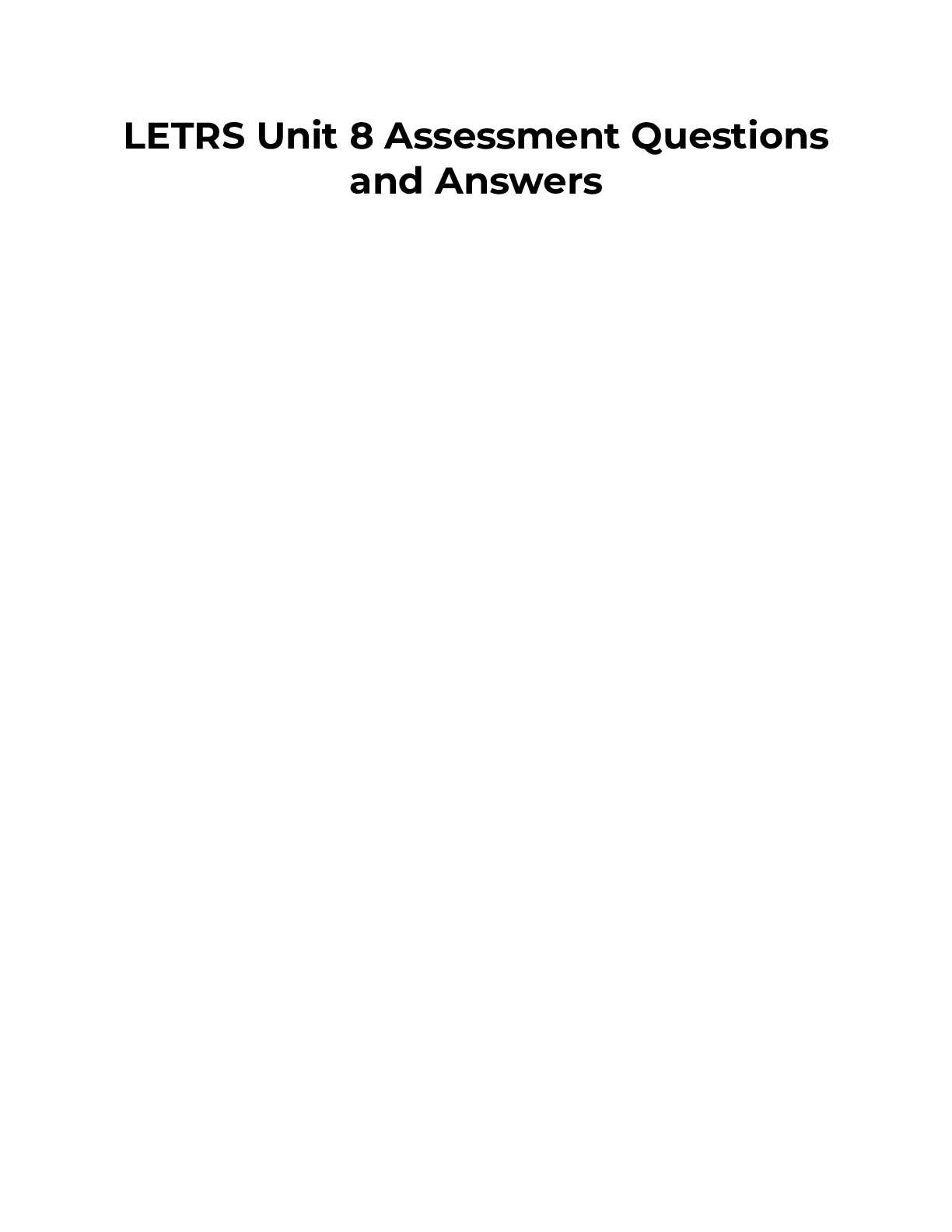
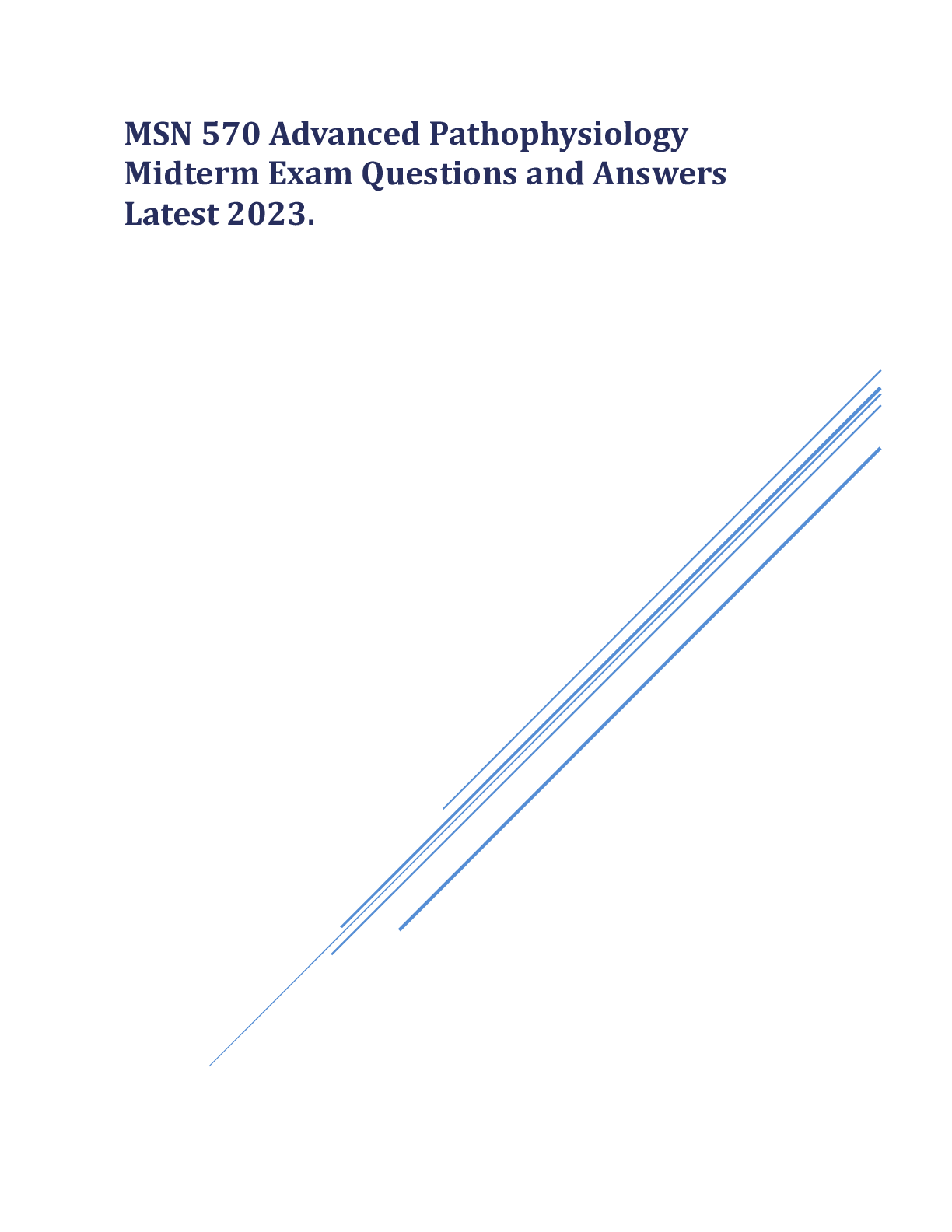
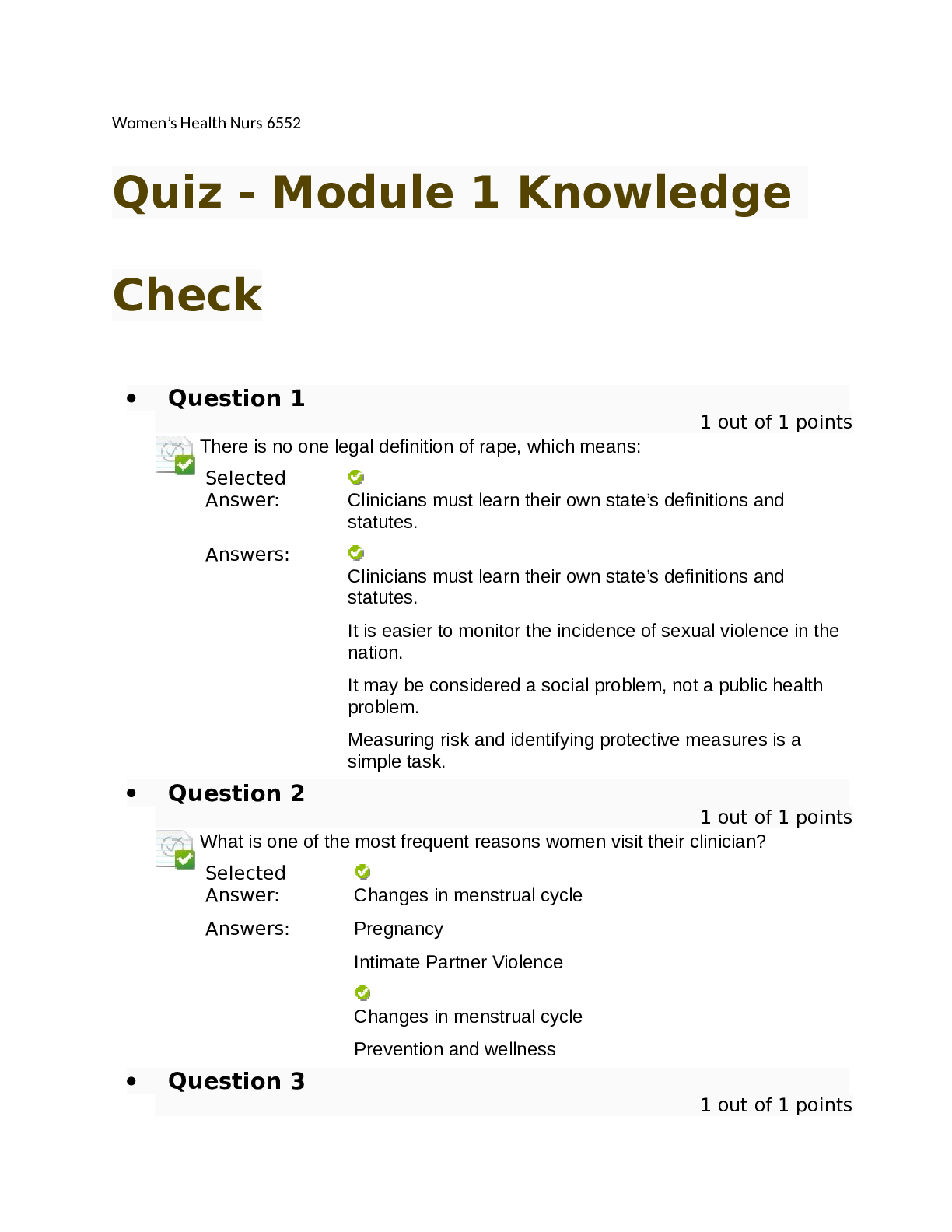

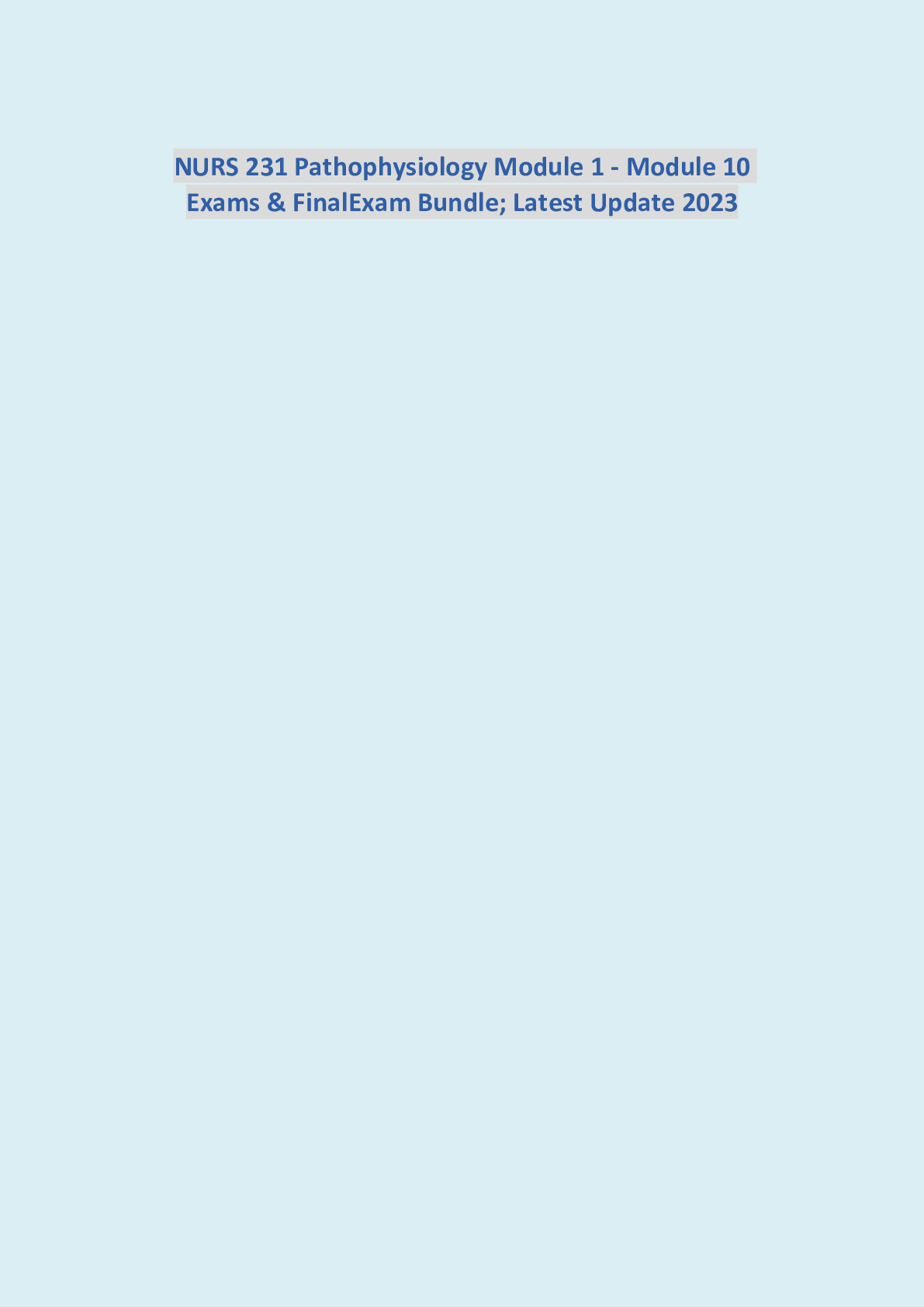
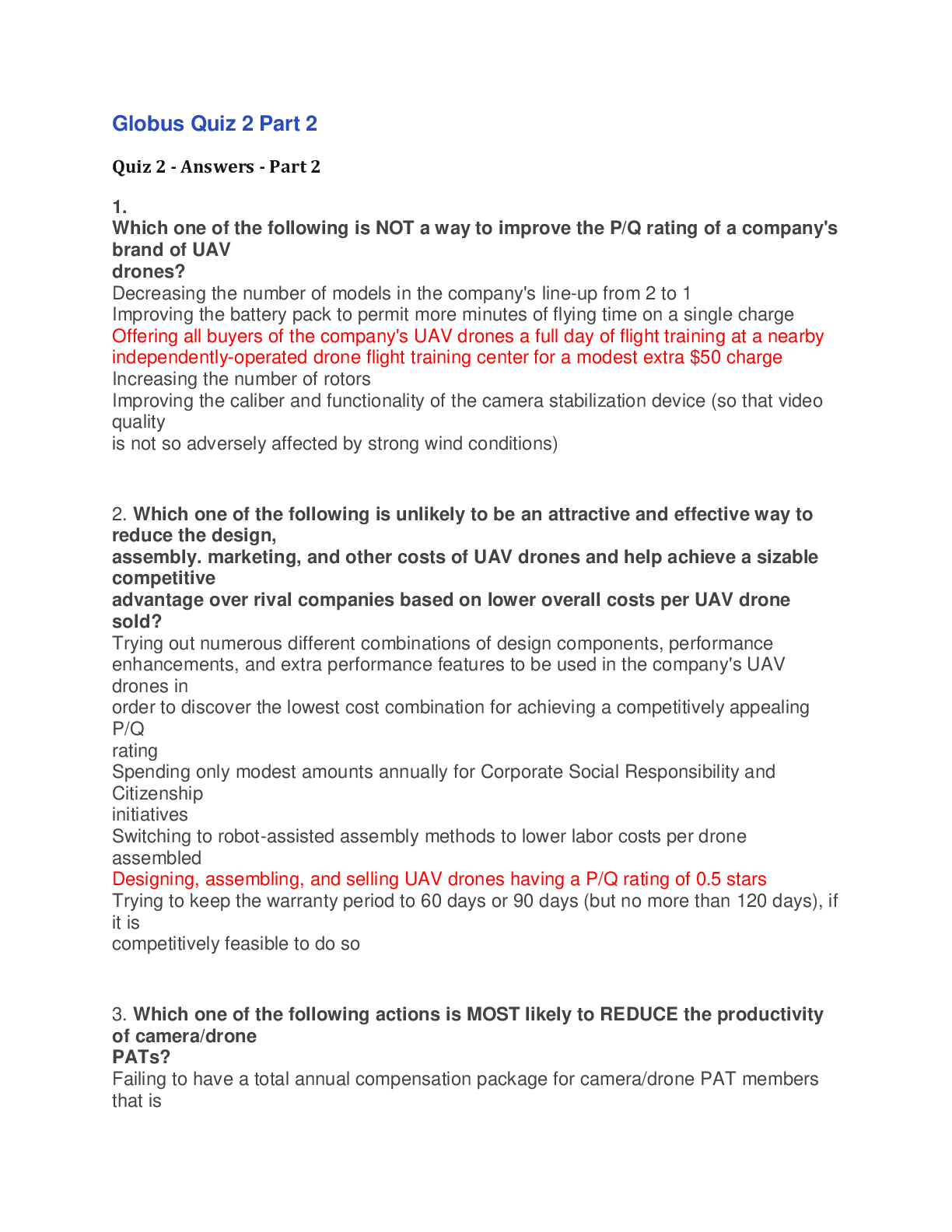

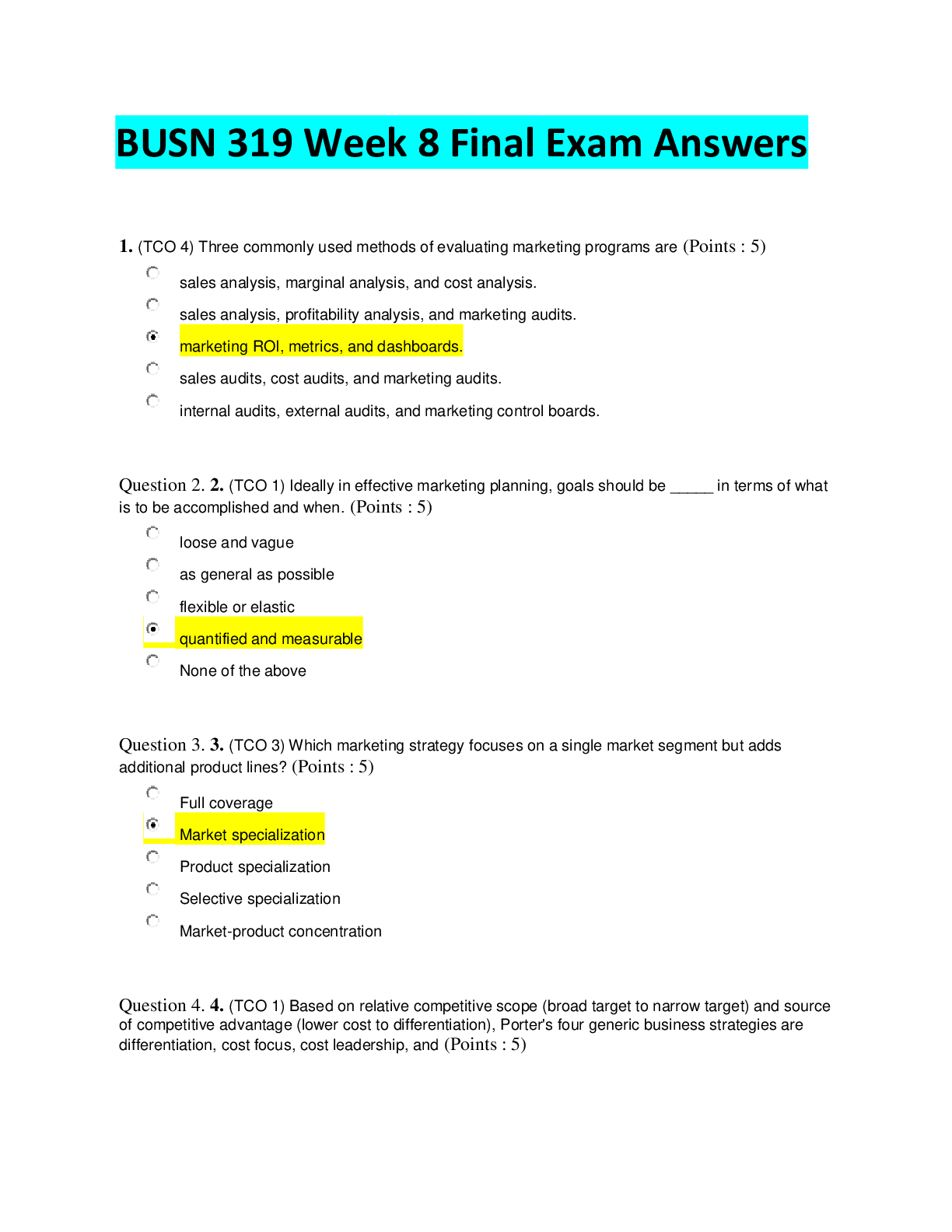

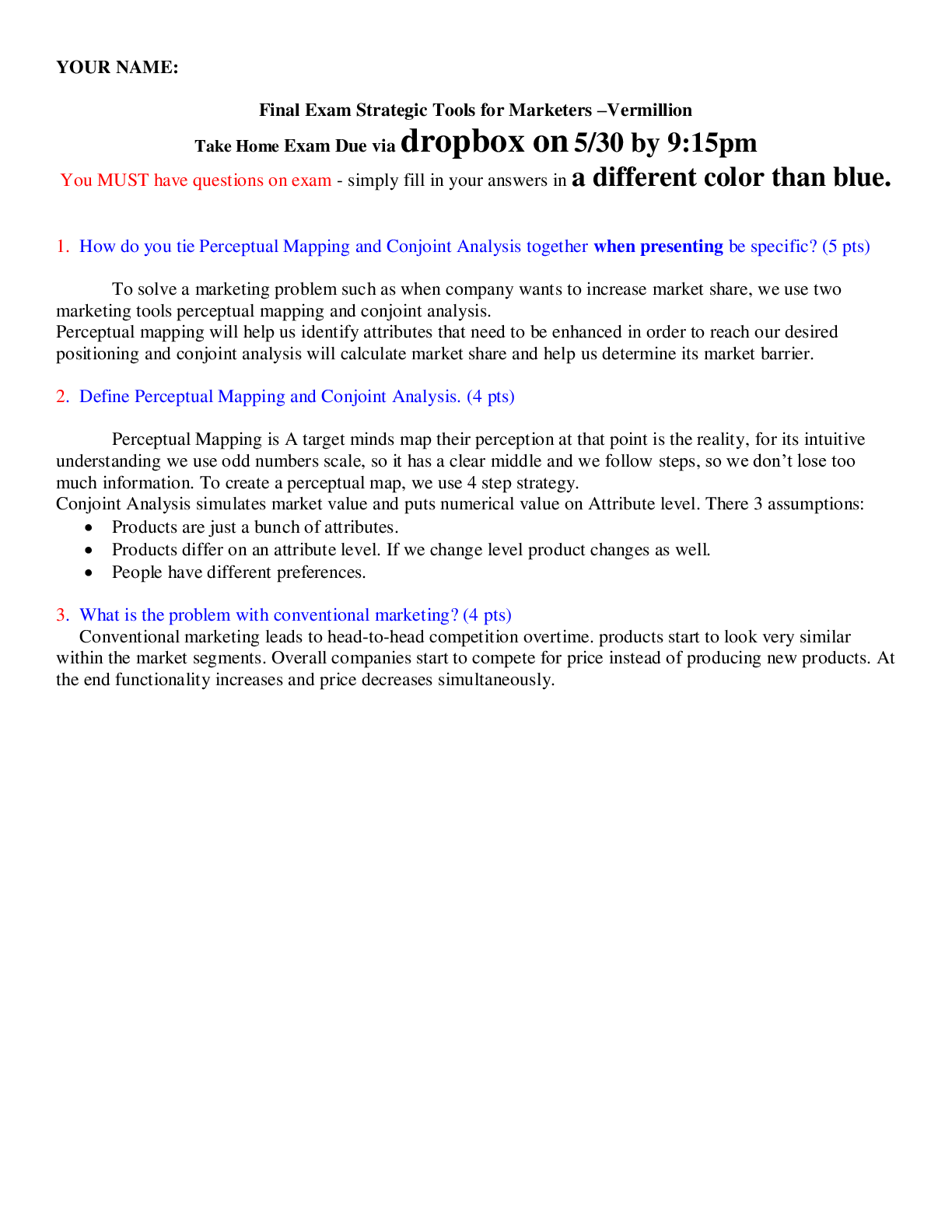


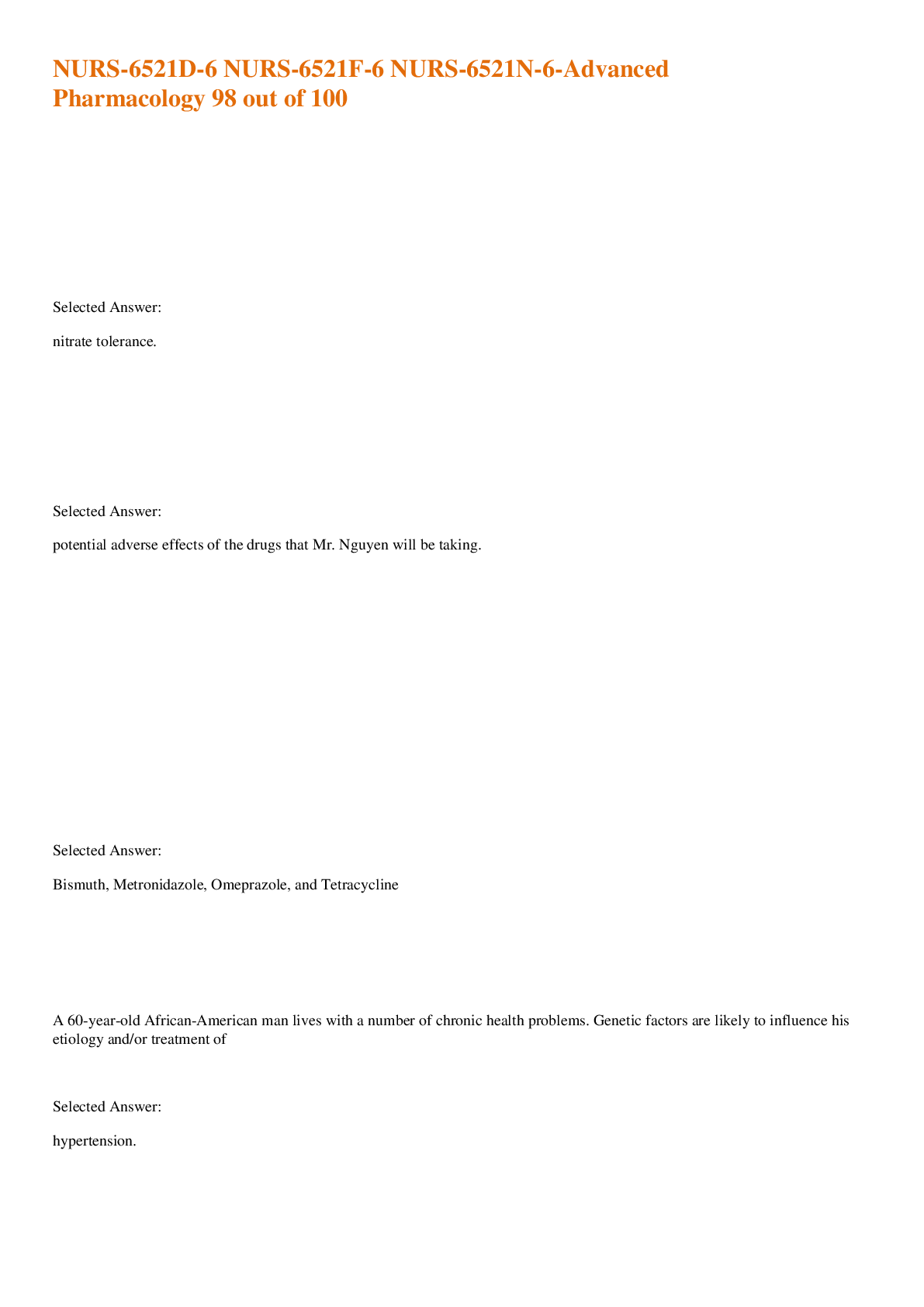
.png)

.png)

